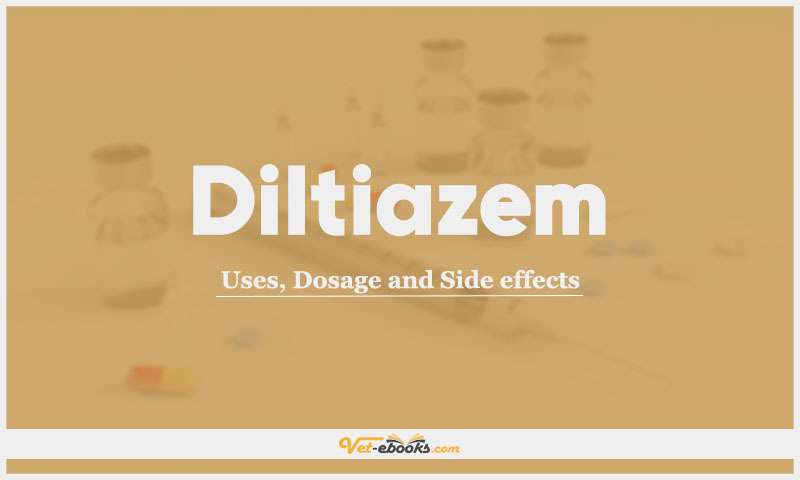Diltiazem: Uses, Dosage and Side Effects

Overview
- Calcium channel blocker that does not contain dihydropyridine.
- It inhibits the inward passage of calcium ions through slow (L-type) calcium channels in myocardial cells, thereby inhibiting cardiac conduction tissue and smooth vascular muscle.
- Diltiazem is less effective than dihydropyridine calcium channel blockers (e.g., amlodipine) at causing coronary and peripheral vasodilation.
- Diltiazem decreases myocardial contractility (negative inotrope, albeit less pronounced than verapamil), electrical activity (delayed atrioventricular conduction), and vascular resistance (vasodilation of cardiac vessels and peripheral arteries and arterioles).
Uses of Diltiazem
- Used to control supraventricular tachyarrhythmias in canines and cats.
- Authorized for use in cats with hypertrophic cardiomyopathy, beta-adrenergic blockers are used more frequently.
- Effective as a monotherapy or in combination with digoxin for the reduction of ventricular rate in canines with atrial fibrillation.
Drug Dosage Calculator
You Should Give:
Dose of Diltiazem in Dogs and Cats
Dogs:
- 0.05–0.25 mg/kg i.v. over 1–2 min, 0.5–2.0 mg/kg p.o. q8h for -MR products or up to 3.0 mg/kg p.o. q12h for sustained/extended release preparations.
- Lower doses are preferred in the presence of heart failure.
- Long-acting preparations have been used at a dose of 10 mg/kg p.o. q24h but there is little experience with such formulations in animals.
- In refractory supraventricular tachyarrhythmias doses up to 4 mg/kg p.o. q8h have been reported.
Cats:
0.05–0.25 mg/kg i.v. over 1–2 min, 0.5–2.5 mg/kg p.o. q8h, or one 10 mg tablet for cats of 3–6.25 kg p.o. q8h.
Side Effects of Diltiazem in Dogs and Cats
- In canines, bradycardia is the commonest adverse effect.
- In cats, it is vomiting.
- Lethargy is observed in both species.
Contraindications of Diltiazem in Dogs and Cats
- Diltiazem is contraindicated in patients with AV block of the second or third degree, marked hypotension, or sick sinus syndrome.
- Should be used with caution in those with systolic dysfunction or acute or decompensated congestive heart failure.
Some Notes:
- There may be additive negative inotropic and chronotropic effects when diltiazem is administered concurrently with beta-adrenergic antagonists (e.g., propranolol).
- It is not recommended to administer diltiazem and beta-blockers together.
- Calcium ions and vitamin D may have a negative impact on the activity of diltiazem.
- There are contradictory data regarding the effect of diltiazem on serum digoxin levels, and it is advised to monitor these levels if the two medications are administered concurrently.
- Cimetidine inhibits diltiazem’s metabolism, thereby elevating plasma concentrations.
- Diltiazem augments the theophylline’s effect, which may result in toxicity.
- It may affect the concentration of ciclosporin.
- Diltiazem may displace agents that are tightly bound to plasma proteins.
- Diltiazem may increase intracellular vincristine concentrations by impeding the drug’s efflux from the cell.
Tip
Do You Want To Increase Your Veterinary Knowledge and Practical Skills?
You Can Now Browse and Download +3000 Books For Veterinary Professionals & Students Online.
Download Veterinary Books




















